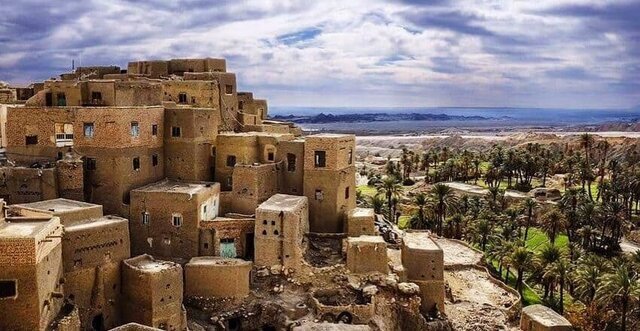South Khorasan shines bright with rural destinations
TEHRAN – Situated in the eastern part of Iran, South Khorasan holds 14 approved target destination villages, which makes the province a delightful station for travel lovers.

Providing insight into the diverse array of approved destinations, South Khorasan’s director-general of cultural heritage, tourism, and handicrafts pinpointed that Afin, Furg, Khvor, Karimo, Baghestan, Khorv, Esfahak, Ezmeyghan, Nay band, Sorond, Malvand, Pirhajat, Makhunik and Chensht are the target villages across the province.
Hadi Shahverdi on Saturday emphasized that being enshrined in the national target destination villages is only possible if the Ministry of Cultural Heritage, Tourism, and Handicrafts approves a destination’s capacity.
The official further detailed the process, stating that the selected target villages boast diverse sources and attractions, featuring historical spots, cultural aspects, distinguished handicrafts, novel traditions along astonishing natural beauties.
“There are high-capacity villages across the province,” Shahverdi noted, “two of which are registered at international and national levels in the handicrafts' sphere.”
Citing an example of potential destinations, the official mentioned a hamlet that was a candidate for the global touristic village.
Furthermore, he demanded funding infrastructure with an eye toward advancing tourism provincewide.
“Rural tourism has a prime position in our decision-making,” Shahverdi stated in his concluding remarks, “applicable measures are underway to exploit the villages’ capacities in a bid to foster tourism.”
Situated in eastern Iran, South Khorasan is bounded by the UNESCO-registered Lut Desert on its south edge. It is home to many historical and natural attractions, such as Birjand Castle, Dragon Cave, Furg Citadel, and Polond Desert. The province is also known for its handmade rugs, as well as its saffron and barberry, among several other agricultural products.
The province has long been a destination for sightseers and researchers willing to visit centuries-old windmills, locally known as Asbads, such as ones located in the oasis city of Tabas-e Masina and Khansharaf village.
Khorasan — meaning the “Land of the Sun” — is a historical region and realm comprising a vast territory now lying in northeastern Iran, southern Turkmenistan, and northern Afghanistan. The historical region extended along the north, from the Amu Darya (Oxus River) westward to the Caspian Sea and, along the south, from the fringes of the central Iranian deserts eastward to the mountains of central Afghanistan.
Iran seeks to reap a bonanza from its numerous tourist spots such as bazaars, museums, mosques, bridges, bathhouses, madrasas, mausoleums, churches, towers, and mansions, of which 27 are inscribed on the UNESCO World Heritage list.
source: tehrantimes.com